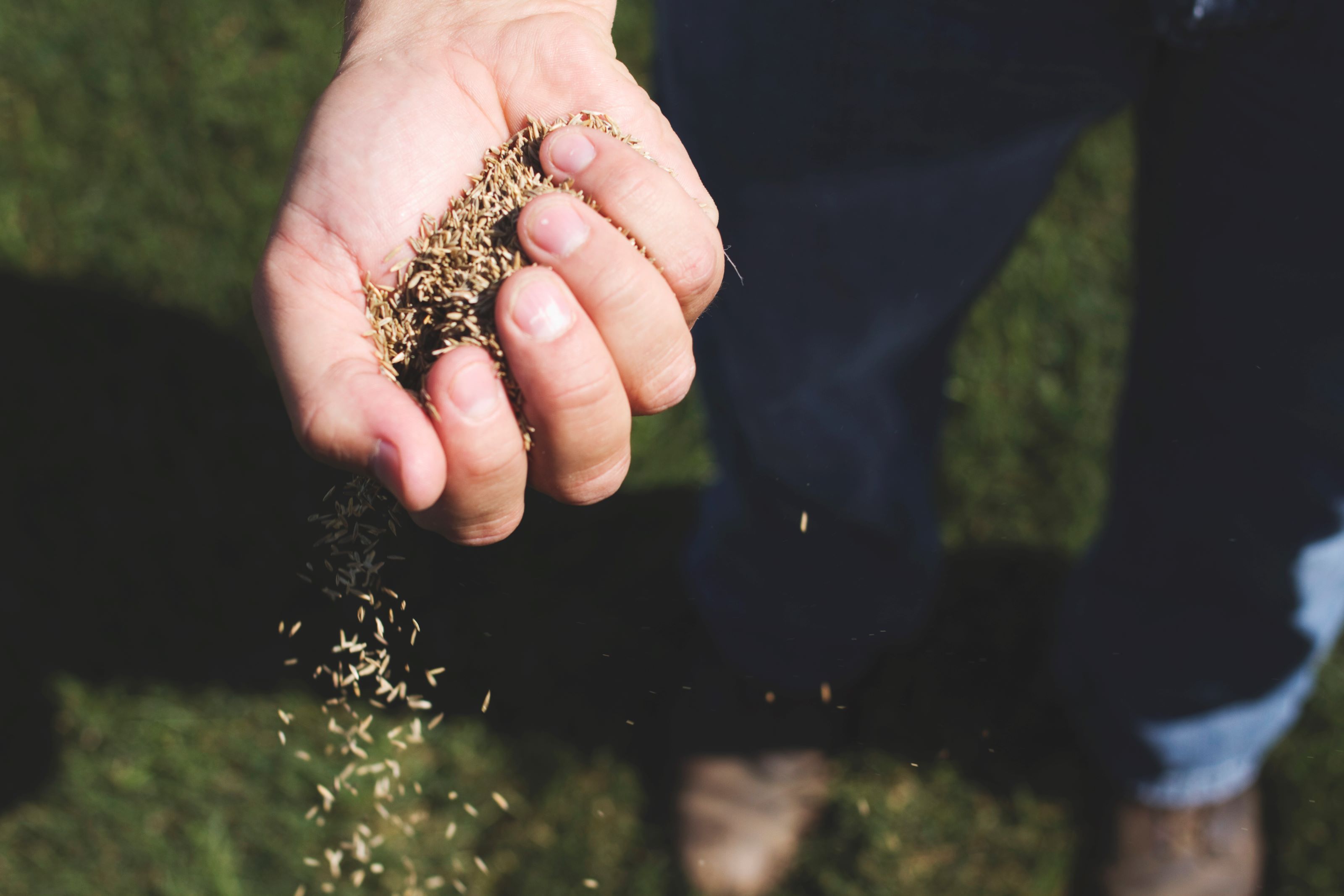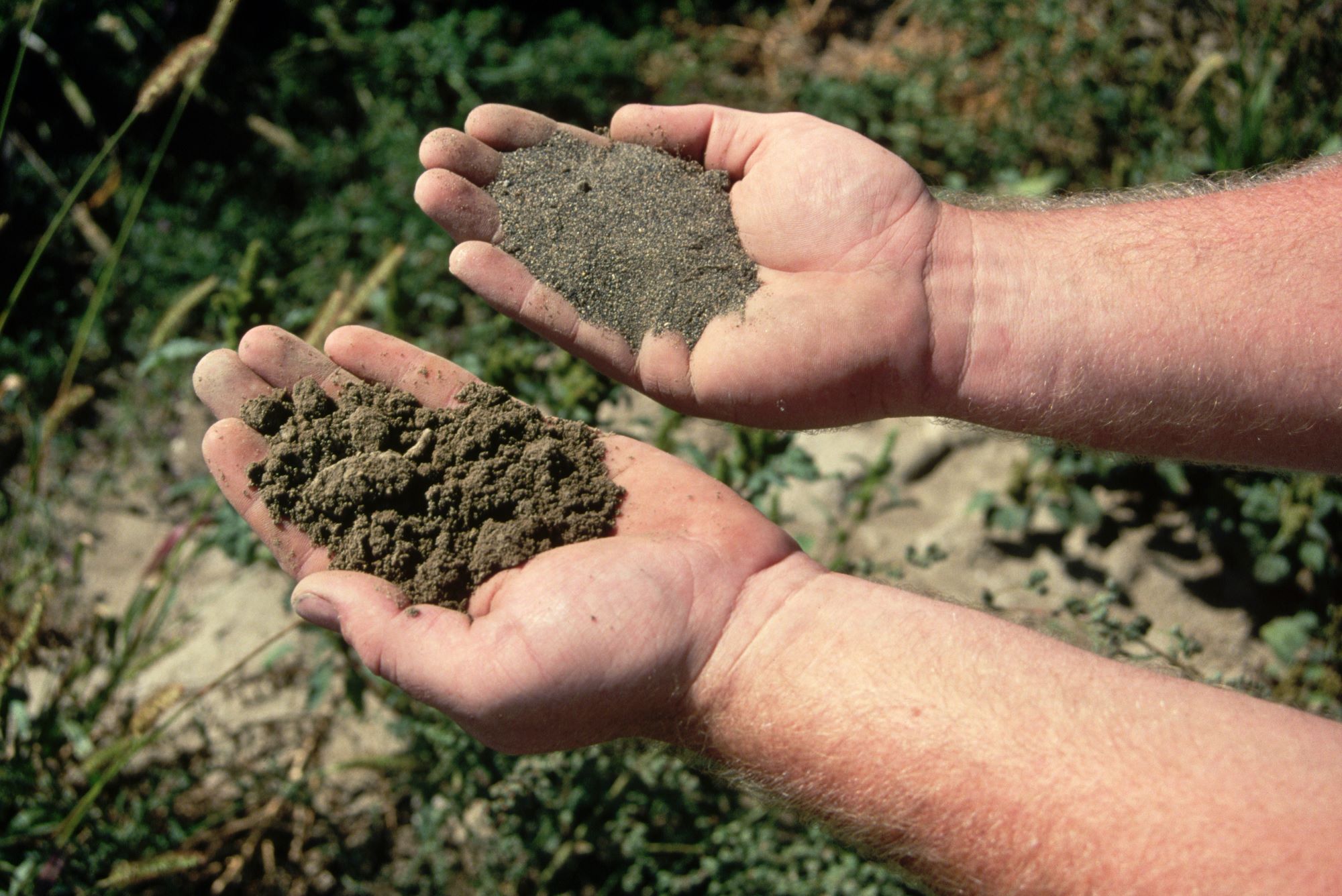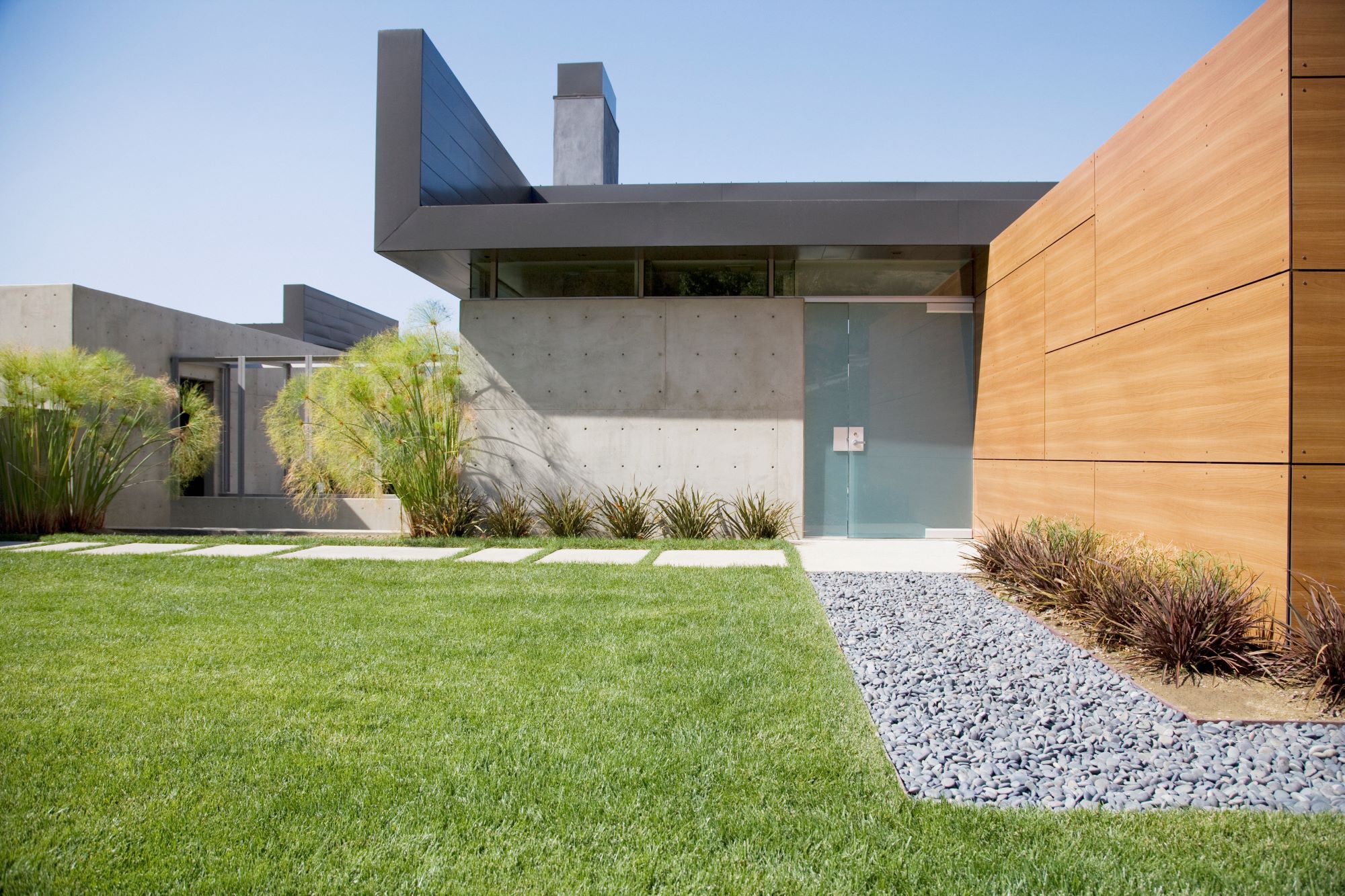How to sow grass seed: Dig deep with our guide to growing the perfect lawn
Knowing how to sow grass seed could be essential after a renovation or landscaping project. Read our in-depth guide to reseeding your lawn for the best results

How to sow grass seed isn't a case of buying a bag of seed and sprinkling it over some soil. You can do that of course, but to establish a lush, green lawn you need to dig a little deeper. And that means literally digging because the best lawns are all about decent soil.
As many in the midst of a renovation or self build project may find, carrying out wide-scale landscaping in the garden can be a necessary part of the works.
During my own renovation, the garden design had been on two levels; one that was unusable as it was too high, while the lower portion was narrow and overshadowed by the top level.
The solution was to level everything out, taking away a good four feet of soil from one half of the garden while raising the other portion up. A digger was brought in and the results of the landscaping were transformative but expensive, costing around £2,000 to remove seven lorry loads of soil and rubble.
The cost – as others may find – ruled out any hope of simply rolling out turf, leaving grass seed as the obvious cost-effective option. Here's our guide on how to sow grass seed for the best results.
How to sow grass seed: Where do you start?
1. First, look at your soil — more specifically the condition of your top soil. If you haven't any top soil, you will need to work out how much topsoil you need and order it before you start work.
I had a 78-year-old farmer who'd spent a lifetime working with soil help with my landscaping. He started by scraping all the good top soil into a large pile before digging up the sub-soil for the muck away lorry to take.
If you don't save the top soil, it will either result in a terrible lawn with sparse (if any) grass or it will cost you extra to buy the top soil back in.
2. Next, you will need to rake the soil to remove as many stones and rocks as much as possible. Stones will block the grass from growing as well as damaging your lawn mower and other garden tools and equipment later on. A lawn with stones in it is not comfortable to use either.
Unfortunately, the way to remove stones is by hand with a wheelbarrow, maybe a garden sieve, rake or maybe a rototiller. If you have the cash to spare you could also just buy in stone-free top soil, but if you have a large garden, this could potentially be an expensive option.
3. After this, I would recommend using a selective weed killer like Weedol's lawn weedkiller, which is available for around £10 here on Amazon, on the soil that targets weeds but not grass (don't use a residual or non-selective weed killer as this will kill your grass).
I didn't use a weed killer on one small section of my lawn as I was rushing to sow the seed before summer and it now has thistles and stinging nettles growing alongside the grass. The lawnmower taking the tops off these weeds did nothing to discourage them from coming through and you shouldn't use weed killer on new grass for around six months so I am stuck with the prickles under foot until the lawn is more established.
4. After this, you are ready to look at grass seed... but read on before sowing it.

How do I put grass seed on my lawn?
For the actual physical act of sowing the grass seed with your hand, use your fingers as a sieve to sprinkle it, palm up, over your soil.
Work across your soil methodically. I laid my grass seed, using this multipurpose seed by A1Lawn that's on Amazon, by mentally dividing the space into horizontal lines. I then started at the back of the area, using a garden rake to smooth out the line before working along it from left to right, making sure I didn't step on the 'line' I was working on as I went.
After the 'line' was complete and had both fertiliser and grass seed sprinkled on it, I'd take a step backwards to expose the next 'line' of soil, using the garden rake to smooth over where I'd previously stood, before starting the process again. I did this all the way to the front of the space that needed seeding.
For larger areas with obstacles, it's worth doing planning in this in zones to make sure you don't have to walk over any areas with seed already on it.
What are the best top soils for my lawn?
Loam soil is the best for grass as well as soil with a slightly acidic or neutral pH.
To see what kind of soil you have, take a handful of it, wet it a little (if needed) and scrunch it into a ball. Loamy soil has an even mix of sand, clay and silt and will hold the shape of a ball when you release it but slowly fall apart when you place it back on the ground.
Sandy soil is more fast draining, your ball will struggle to hold its structure if it has more sand in it and will have fewer nutrients in it. Clay soil meanwhile holds more moisture and your ball will not fall apart when you place it back on the ground.
If the pH of your soil is too acidic or too alkaline it will make it harder for your grass to absorb nutrients.
Basically you want a balance and that's loam soil. But if that is going to be hard to achieve, then you can try to mitigate it by buying specific grass seeds that are better suited to different soil types.
For instance, a perennial ryegrass is hardy and would do better than other grass types in a clay soil environment. Meanwhile, fescue grass will grow better than other types in sandy soil due to it being fairly drought-resistant.
It's worth doing some research to match the best grass type for both your use and your soil and conditions. Getting this right will help your lawn become easier to manage. It's also worth checking out other low maintenance garden ideas if that's the setup you are trying to achieve.

What month is best to put grass seed down?
Sowing grass seed in either the spring months – late March and April – or autumn months – September and mid-October – is usually recommended.
It is possible to sow grass seed at other times of the year but bear in mind that if you do so at the height of summer, you will need to water the seed each day and even then the young grass may become parched in the heat and not grow well. This can be a particularly labour intensive as well as not being ideal for conserving water at a time with limited water supplies.
Meanwhile during the winter months, a frost can kill off young plants that have yet to establish themselves.
Essentially, avoid sowing grass seed when it will be dry or frosty for a sustained period.
I have sown grass in both spring and autumn and I'd argue that after the summer, when the rain begins but before the frost is the best time.
This spring, it was particularly dry very early on in April. This meant I had to use a sprinkler to make sure the grass survived, which was not ideal or cost-effective. I also found the birds (pigeons mainly) ate a lot of the seed as well as dust bathing and frolicking around together in my newly-seeded soil.
This created bare patches and the pigeons really didn't seem to care about my makeshift bird scares. I'm told 'bird tape' that vibrates is a better deterrent for those who still need to sow in springtime.
Meanwhile, the grass I sowed the year before in autumn grew quickly and far more evenly. There was also no need to water it, as the ground was moist and the rain did this work for me.
This may of course vary from year to year depending on the weather conditions.
Do you need to use a lawn fertiliser?
To get the best quality lawn you need a decent grass fertiliser as grass likes nitrogen-rich soil.
The fertiliser I used was from A1Lawn on Amazon and came as small balls – known as granular fertiliser – that could be scattered easily alongside the grass seed. It was designed to slowly release nitrates over three months so make sure the grass grew consistently and not in spurts. The fertiliser also claimed to protect watercourses from nitrates, which can cause algae that can choke the waterways, although it wasn't clear how it did this.
Be aware that you shouldn't let your animals eat the fertiliser or walk around or roll on it. If you have anything like chickens, they can mistake the granules of fertiliser for a tasty snack. What is in a fertiliser and how bad this might be for the animal varies, so check the packaging.
You can get organic fertilisers too if organic gardening is your shtick.

What weather conditions are best for sowing grass?
First, check the wind. If you don't pay attention to this, you could end up with grass seed flying back at you or onto a patch of soil you've already sown seed on.
Second, aim for a dry-ish day. If you try to sow grass seed in heavy rain, the seed will end up everywhere you don't want it and you'll create huge foot-shaped indentations in your soil, which will later be foot-shaped indentations in your lawn.
Can I put grass seed on top of grass?
Technically you can but for best results use a rotovator or dig your lawn up and start again.
A good comparison to use here is growing vegetables. Vegetables grown on newly prepared, fluffy soil are likely to be larger and healthier than those grown in the remnants of an old vegetable patch where the soil hasn't been turned. It's pretty much the same with grass.
Working your soil will not only aerate the soil and loosen any compacted areas but it'll give you a chance to get rid of any stones and expose any nasty critters that have been eating the roots of your old grass too.
It's worth having a look at some lawn ideas too so you know exactly what look you are trying to achieve.
Get the Homebuilding & Renovating Newsletter
Bring your dream home to life with expert advice, how to guides and design inspiration. Sign up for our newsletter and get two free tickets to a Homebuilding & Renovating Show near you.

Amy spent over a decade in London editing and writing for The Daily Telegraph, MailOnline, and Metro.co.uk before moving to East Anglia where she began renovating a period property in rural Suffolk. During this time she also did some TV work at ITV Anglia and CBS as well as freelancing for Yahoo, AOL, ESPN and The Mirror. When the pandemic hit she switched to full-time building work on her renovation and spent nearly two years focusing solely on that. She's taken a hands-on DIY approach to the project, knocking down walls, restoring oak beams and laying slabs with the help of family members to save costs. She has largely focused on using natural materials, such as limestone, oak and sisal carpet, to put character back into the property that was largely removed during the eighties. The project has extended into the garden too, with the cottage's exterior completely re-landscaped with a digger and a new driveway added. She has dealt with de-listing a property as well as handling land disputes and conveyancing administration.
